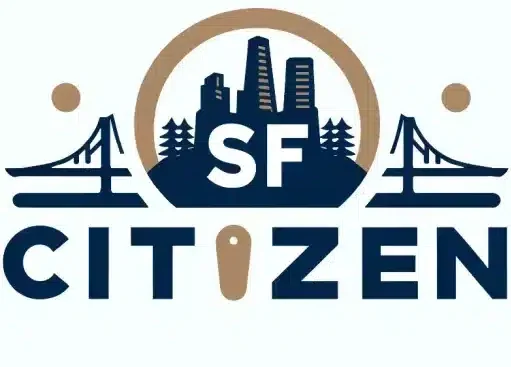The East Bay, encompassing cities like Oakland, Berkeley, and Richmond, serves as a critical hub for cultural diversity, economic development, and educational excellence within the San Francisco Bay Area. With a commitment to social movements, racial justice, and environmental sustainability, the East Bay showcases a progressive spirit and community resilience.
In This Article
Key Points
- Addressing the challenges of housing affordability, homelessness, and the jobs-housing imbalance is essential for sustaining the region’s growth and inclusivity.
- The East Bay’s major cities, such as Oakland, Berkeley, Emeryville, and Richmond, shape the region’s unique identity.
- UC Berkeley and other educational institutions significantly influence the area’s cultural and intellectual environment.
Understanding the East Bay’s Geographical and Cultural Landscape
Geographically, the East Bay is located on the eastern shores of the San Francisco Bay, directly across from San Francisco and the Peninsula. This strategic location allows the East Bay to play a vital role in the larger Bay Area’s economic and cultural fabric.
Major cities within the East Bay, such as Oakland, Berkeley, Emeryville, and Richmond, each contribute to the region’s diverse and vibrant character:
- Oakland, the largest city in the East Bay, is known for its thriving arts and music scene, diverse neighborhoods, and a rich history of social activism.
- Berkeley, home to the prestigious University of California, Berkeley (UC Berkeley), is renowned for its academic excellence, progressive values, and contributions to the Free Speech Movement.
- Emeryville, a small city nestled between Oakland and Berkeley, has transformed from an industrial hub into a center for technology, retail, and entertainment.
- Richmond, located in the northern part of the East Bay, boasts a diverse population, a growing arts community, and a commitment to environmental justice.
The presence of UC Berkeley and other top-tier educational institutions, such as Mills College and California State University, East Bay, has a profound impact on the East Bay’s cultural and intellectual landscape. These institutions attract students, faculty, and researchers from around the world, fostering a dynamic and innovative environment.
Economic and Industrial Evolution in the East Bay
Historically, the East Bay has been a center of industrial growth and economic development. The region’s strategic location and access to transportation networks, including the Port of Oakland, have made it an attractive destination for businesses across various sectors.
The expansion of Silicon Valley has had a significant impact on the East Bay’s job market and housing sector. As tech companies have grown and sought more affordable office space, many have turned to the East Bay, particularly Oakland and Emeryville. This influx of tech jobs has brought both economic opportunities and challenges, such as rising housing costs and concerns about gentrification.
To support the growing population and economic development, the East Bay has invested in transit infrastructure, such as the Bay Area Rapid Transit (BART) system and bus rapid transit (BRT) lines. These investments aim to improve connectivity, reduce traffic congestion, and promote sustainable urban growth.
Housing and Social Equity Challenges
One of the most pressing issues facing the East Bay is the escalating crisis of affordable housing and the shortage of low-income apartments. As housing costs have skyrocketed, many residents, particularly those from low-income and marginalized communities, have struggled to find affordable places to live.
To address this challenge, local governments and community organizations have implemented various initiatives and services, such as:
- Increasing the supply of affordable housing through inclusionary zoning policies and public-private partnerships.
- Providing emergency shelter and supportive housing for individuals experiencing homelessness.
- Offering rental assistance programs and tenant protections to prevent displacement.
Ensuring equitable access to economic opportunities and resources is another critical aspect of promoting social equity in the East Bay. Community-based organizations and advocacy groups work tirelessly to combat displacement, support small businesses, and create pathways for upward mobility.
Environmental Sustainability and Climate Action
The East Bay is at the forefront of addressing climate change and promoting environmental sustainability. Local governments have developed comprehensive climate action plans that outline strategies for reducing greenhouse gas emissions, promoting renewable energy, and adapting to the impacts of climate change.
Transit investment and sustainable urban planning play a crucial role in reducing the region’s carbon footprint. By expanding public transportation options and encouraging transit-oriented development, the East Bay aims to reduce reliance on single-occupancy vehicles and promote walkable, livable communities.
Community-led movements and organizations also play a vital role in advocating for environmental justice and promoting sustainable practices. These groups work to ensure that the benefits of environmental policies are distributed equitably and that marginalized communities are not disproportionately burdened by environmental hazards.
The Cultural and Recreational Tapestry of the East Bay
The East Bay boasts a rich and diverse cultural scene, with a wide array of attractions and events that showcase the region’s creativity and community spirit. From world-class museums like the Oakland Museum of California to vibrant music festivals such as the Berkeley World Music Festival, there is no shortage of cultural experiences to enjoy.
For those seeking outdoor adventures, the East Bay offers a variety of natural beauty spots and recreational activities. Highlights include:
- Tilden Regional Park, a vast park in the Berkeley Hills with hiking trails, a lake, and a botanical garden.
- The Berkeley Marina, offering stunning views of the San Francisco Bay and opportunities for boating, fishing, and windsurfing.
- The East Bay Regional Park District, encompassing over 120,000 acres of parks and trails for hiking, biking, and horseback riding.
The East Bay’s cultural landscape is also shaped by its history of social movements and community activism. From the Free Speech Movement of the 1960s to the ongoing struggles for racial justice and equity, the region has a proud tradition of advocating for social change and cultural inclusivity.
Navigating the East Bay: Transportation and Accessibility
The East Bay benefits from a robust transportation network that facilitates access across the region. The BART system, which connects the East Bay to San Francisco and other parts of the Bay Area, is a critical component of this network. BART stations in Oakland, Berkeley, and Richmond provide convenient access to major employment centers, cultural attractions, and educational institutions.
In addition to BART, the East Bay is served by an extensive bus network operated by AC Transit. This network includes both local and transbay routes, connecting communities within the East Bay and providing links to San Francisco and other parts of the Bay Area.
Looking to the future, the East Bay is investing in transportation infrastructure improvements to enhance mobility and connectivity. These investments include the expansion of BART lines, the development of bus rapid transit corridors, and the promotion of active transportation options like cycling and walking.
FAQ
What cities comprise the East Bay?
The primary cities within the East Bay include Oakland, Berkeley, Richmond, Emeryville, Alameda, San Leandro, Hayward, and Fremont. Each city has its own unique character and contributes to the region’s diverse tapestry.
How is the East Bay addressing affordable housing and homelessness?
Local governments and community organizations in the East Bay are working to increase the supply of affordable housing through policies like inclusionary zoning, public-private partnerships, and the development of low-income apartments. They also provide emergency shelter, supportive housing, and rental assistance programs to address homelessness.
What are the major cultural attractions in the East Bay?
The East Bay offers a wide range of cultural attractions, including the Oakland Museum of California, the Berkeley Art Museum and Pacific Film Archive, the Fox Theater, and the historic Paramount Theatre. The region also hosts numerous festivals and events throughout the year, celebrating its diverse communities and artistic traditions.
How does the East Bay contribute to environmental sustainability?
The East Bay is committed to environmental sustainability through the implementation of climate action plans, investment in renewable energy, and the promotion of sustainable transportation options. Community-led movements and organizations also play a crucial role in advocating for environmental justice and promoting eco-friendly practices.
What role does UC Berkeley play in the East Bay community?
UC Berkeley, one of the world’s top public universities, is a major anchor institution in the East Bay. The university contributes to the region’s economic development, cultural vibrancy, and intellectual capital. It attracts students, faculty, and researchers from around the globe, fostering a dynamic and innovative environment.

